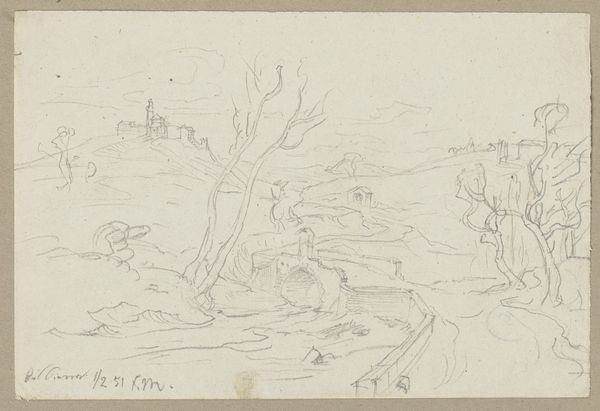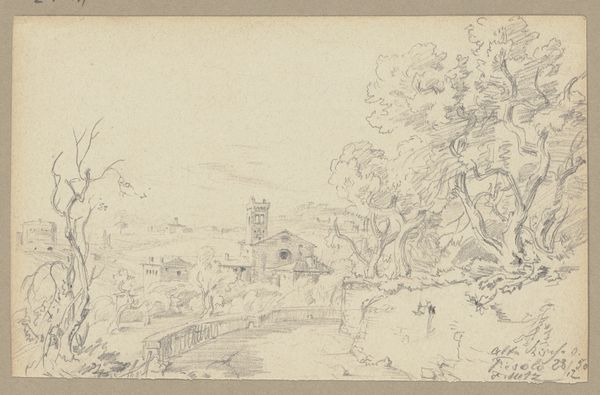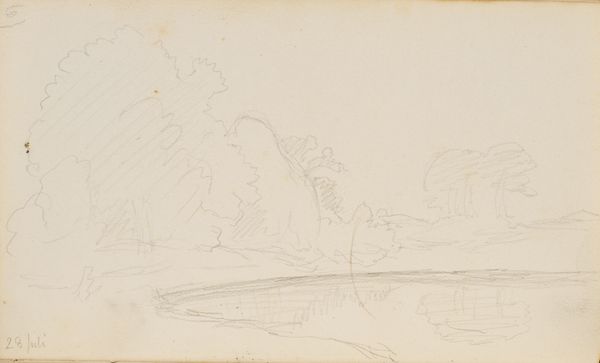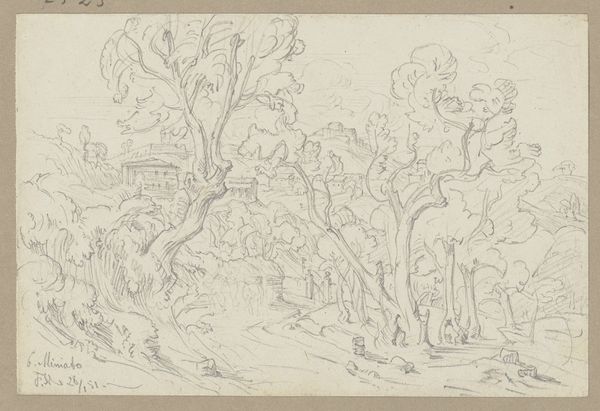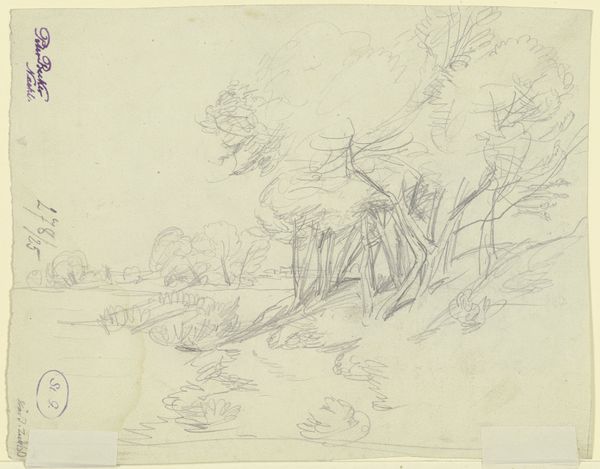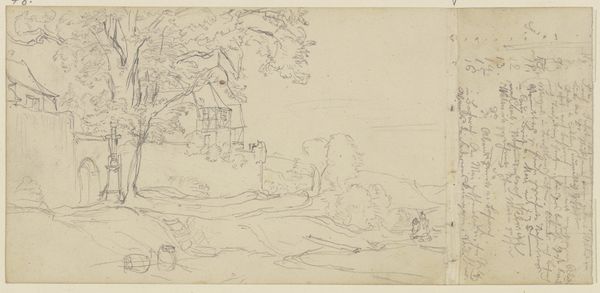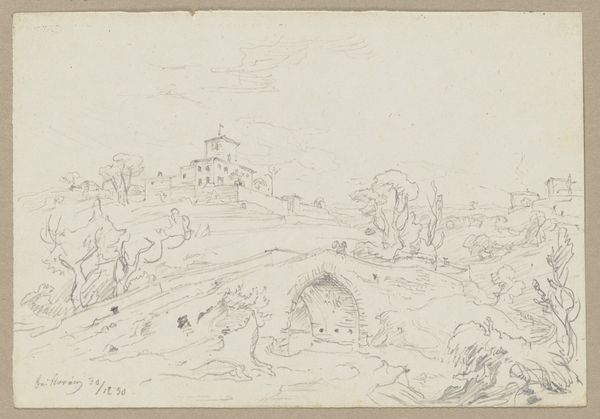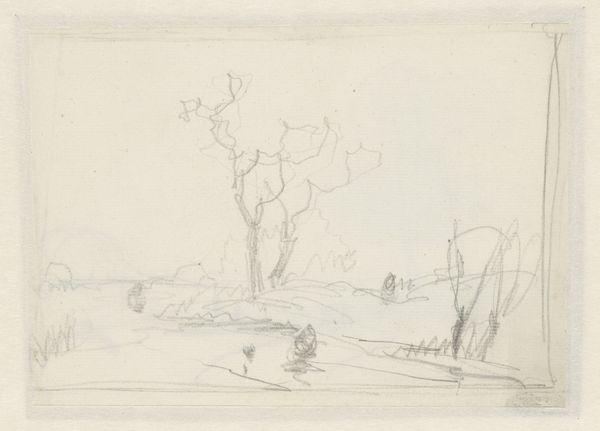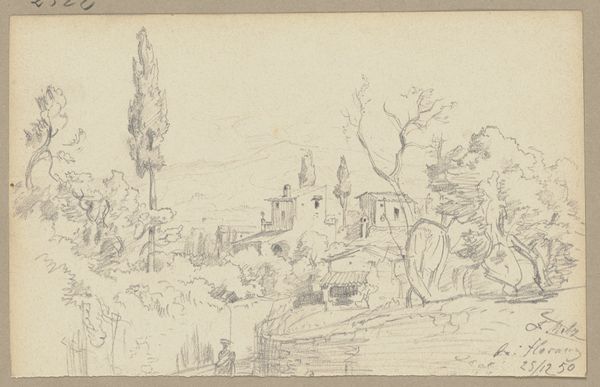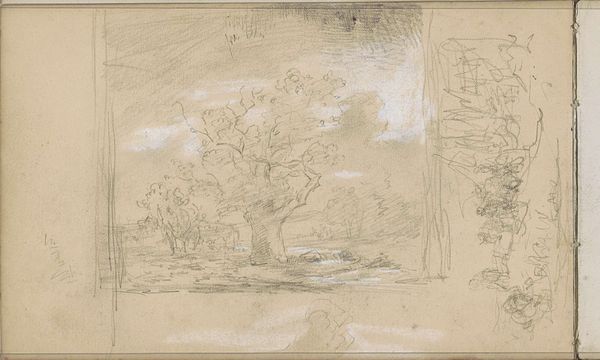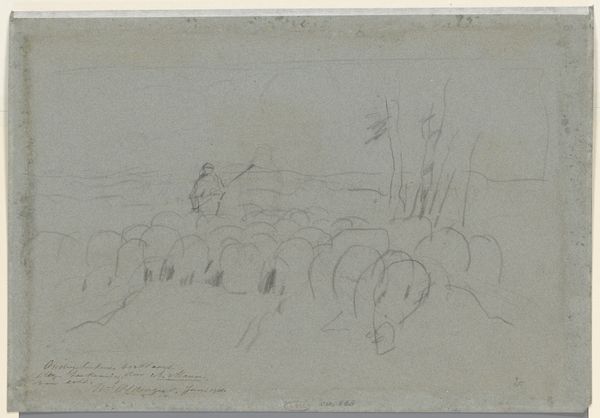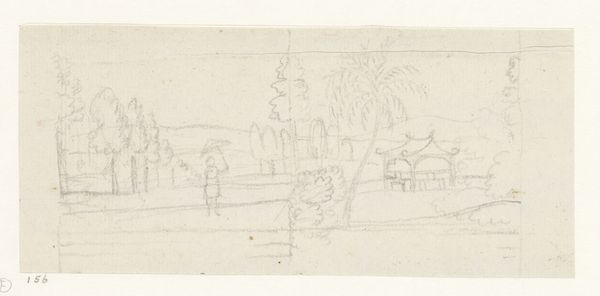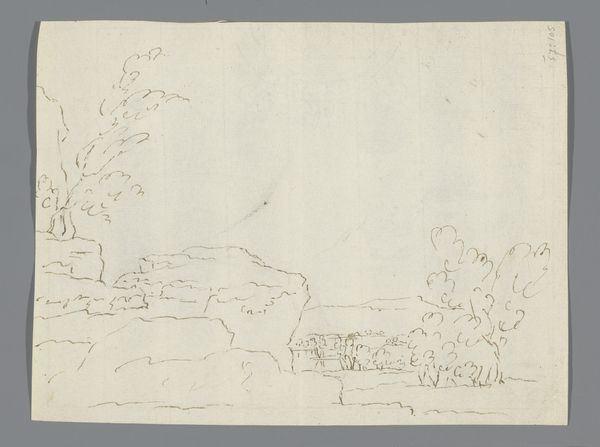
drawing, pencil, architecture
#
drawing
#
landscape
#
pencil
#
cityscape
#
architecture
Copyright: Public Domain
Curator: Here we have a drawing by Friedrich Metz, "Landscape, with the Cathedral of Florence in the Background." It's rendered in pencil. Editor: It has a certain delicacy, doesn’t it? Almost feels like a dreamscape – wispy, almost ethereal. You can make out the buildings in the background, but the foreground seems to melt into the landscape. Curator: It’s interesting how the architecture is framed by the organic forms of the trees. This work really underscores the evolving image of Florence through the eyes of visiting artists and its promotion as a popular destination of the Grand Tour. Editor: And look at the textures! See how Metz uses such simple strokes to create such depth? There's this incredible layering—the varying pressures he used with the pencil must have required precision. Think of the material limitations forcing careful control. Curator: Indeed, the work testifies to a shift toward open-air sketching. The artist isn't in the studio; he's right there, amidst nature, translating it. Editor: What gets me is that we're not talking about an industrial scale of labor to produce this. It is a single artisan and his chosen implements - the paper and pencil - that results in this visual statement. It highlights, to me, the human aspect in crafting art, as opposed to mass production. Curator: Very true. While the Duomo signifies Florentine power and religious influence, the artwork speaks of a personalized engagement with a city through an artistic vision accessible through prints and circulated among artist circles and their patrons. It highlights the shifting dynamics between commerce, art, and society's taste in scenery and travel. Editor: Right, you’ve made me see it from a perspective on patronage and class relations! This makes you think about what drove this drawing, who would own and share such image—as opposed to other images from this era? I think that the very lack of color might mean to communicate the simplicity and truth of being there. Curator: It certainly offers an important document, whether we want to trace the city's representation, artists' movements or simply relish the vision it presents. Editor: Indeed. The more you consider his approach to composition and craftsmanship, the more you realize the work transcends the traditional definition of just “art.” It's about how Metz saw and translated this experience in simple strokes, through the careful labor of the hand.
Comments
No comments
Be the first to comment and join the conversation on the ultimate creative platform.
